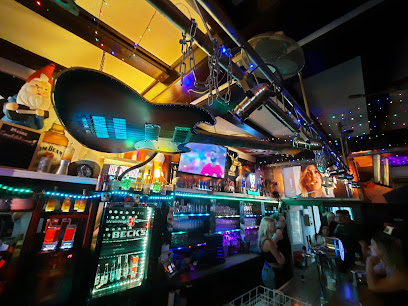
Memorial of German Unity: A Symbol of German History
Witness the confluence of history and rivers at the Memorial of German Unity in Koblenz, a symbol of Germany's journey through division and reunification, offering panoramic views.
The Memorial of German Unity, also known as Deutsches Eck (German Corner), stands as a powerful symbol of German unification at the confluence of the Rhine and Moselle rivers in Koblenz. Originally the site of a monument to Kaiser Wilhelm I erected in 1897, it was rededicated in 1953 as a memorial to German unity after the original statue was damaged in World War II. Today, a reconstructed equestrian statue of Kaiser Wilhelm I overlooks the rivers, attracting millions of visitors annually. The site is a poignant reminder of German history, offering stunning views and a chance to reflect on the nation's journey through division and reunification. Visitors can explore the area, learn about its history, and enjoy the picturesque surroundings, making it a must-see destination in Koblenz. The Deutsches Eck is easily accessible and provides a memorable experience for all who visit.
A brief summary to Memorial of German Unity
- Peter-Altmeier-Ufer, Koblenz, 56068, DE
- Visit website
Local tips
- Visit early in the morning or late in the afternoon to avoid crowds and enjoy a more peaceful experience.
- Take a boat tour on the Rhine or Moselle for a unique perspective of the Deutsches Eck and the surrounding area.
- Combine your visit with a trip to Ehrenbreitstein Fortress via the cable car for stunning panoramic views.
- Explore the Old Town of Koblenz, located a short walk from Deutsches Eck, for charming streets and historic buildings.
- Check the local events calendar for festivals and celebrations happening at Deutsches Eck throughout the year.
Getting There
-
Walking
From Koblenz city center (e.g., Zentralplatz/Forum), the Memorial of German Unity is approximately a 15-20 minute walk. Head northeast towards the Rhine River. Follow the Konrad-Adenauer-Ufer promenade along the Rhine, passing the Electoral Palace (Kurfürstliches Schloss). Continue until you reach the Deutsches Eck, where the Rhine and Moselle rivers meet. The monument will be directly in front of you.
-
Public Transport
From Koblenz Hauptbahnhof (main train station), take any bus that stops at 'Zentralplatz/Forum' (most lines do). From there, follow the walking directions above (15-20 minute walk along the Rhine). A single bus fare within Koblenz is approximately €2.60. Alternatively, consider purchasing a Koblenz Card for €9.80, which provides 24 hours of free travel on public transport within the city and discounts on other attractions.
-
Taxi/Ride-Share
A taxi or ride-share from Koblenz Hauptbahnhof to the Memorial of German Unity will take approximately 5-10 minutes, depending on traffic. Expect to pay around €8-€12. Ask the driver to take you to 'Deutsches Eck'.
-
Ferry
From the Ehrenbreitstein district, take the 'Schängel Ferry' across the Rhine to the Deutsches Eck. The ferry operates frequently. A one-way ticket costs approximately €2.00. Alternatively, the 'Liesel' ferry connects Deutsches Eck with the Koblenz campsite and Lützel district, offering picturesque views.
-
Driving
If driving, navigate to Peter-Altmeier-Ufer, 56068 Koblenz. Parking near Deutsches Eck is limited. The nearest parking garages are 'Parkhaus am Schlossparkplatz' and 'Rathausgarage'. Hourly parking rates range from €1.50 to €2.00. Street parking is also available but may be difficult to find. Be aware of parking regulations and resident parking zones ('Anwohnerparken').
Discover more about Memorial of German Unity
Iconic landmarks you can’t miss
Denkmal der deutschen Einheit
0.1 km
Witness the confluence of history and rivers at the Denkmal der Deutschen Einheit in Koblenz, a powerful symbol of German unity and resilience at the Deutsches Eck.
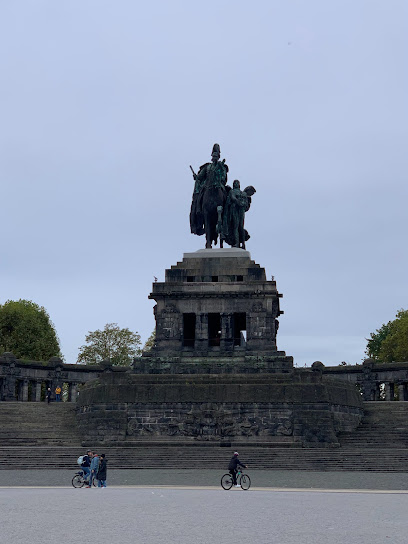
Peter-Altmeier-Denkmal
0.4 km
Honoring Peter Altmeier, the influential Minister-President of Rhineland-Palatinate, this monument symbolizes regional unity and post-war reconciliation near Deutsches Eck in Koblenz.
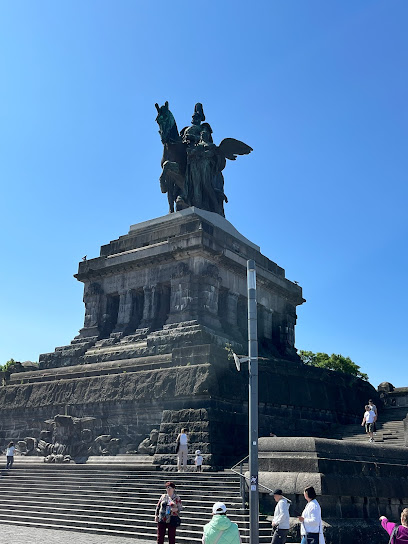
Josef-Görres-Platz
0.6 km
Experience the vibrant heart of Koblenz at Josef-Görres-Platz: a historic square where culture, architecture, and local life intertwine, offering an unforgettable glimpse into the city's soul.
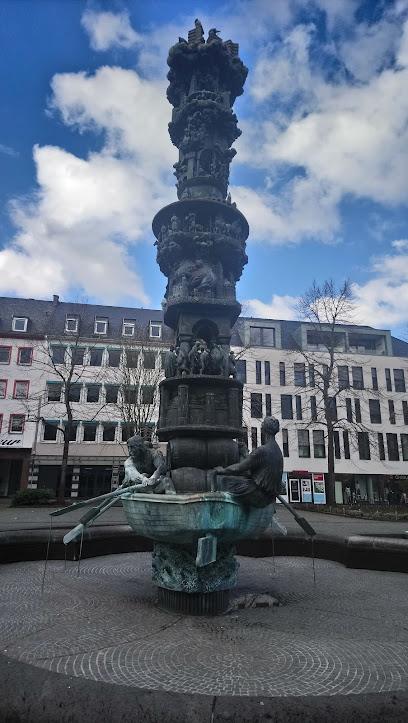
Ehrenbreitsteiner Festungsaufzug
0.7 km
Ascend to Ehrenbreitstein Fortress with ease on the modern incline lift, offering panoramic views and barrier-free access to this historic landmark and UNESCO World Heritage Site.
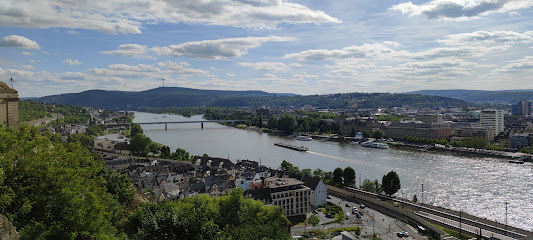
Pegelbrunnen
0.7 km
Discover Koblenz's flood history at the Pegelbrunnen in Ehrenbreitstein, a unique fountain marking centuries of Rhine River water levels on Kapuzinerplatz.
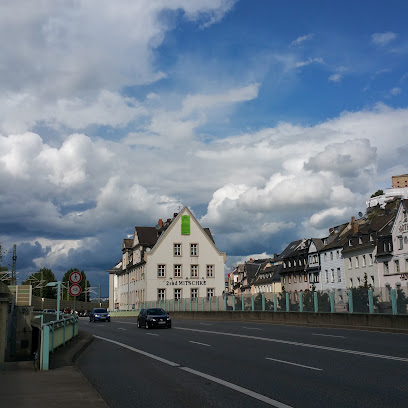
Jesuitenpl.
0.7 km
Discover Jesuitenplatz in Koblenz: A historic square where the echoes of the Jesuit order resonate through stunning architecture and a vibrant cultural atmosphere in the heart of the Old Town.
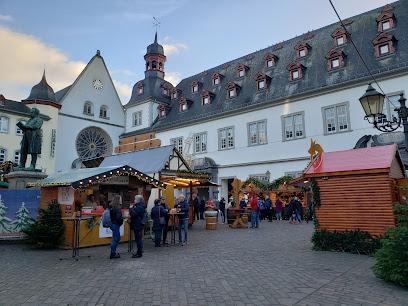
Ehrenmal des deutschen Heeres
0.7 km
A somber memorial within Ehrenbreitstein Fortress, Koblenz, honoring German Army soldiers and offering a space for reflection on war and remembrance.
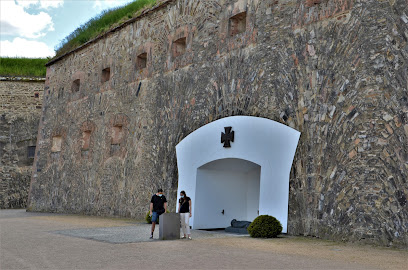
Barmherzige Brüder von Maria-Hilf - Peter Friedhofen Haus
0.7 km
Discover a serene sanctuary in Koblenz's Old Town at the Peter Friedhofen Haus, a historic monastery offering tranquility, reflection, and a glimpse into the Barmherzige Brüder's enduring legacy.
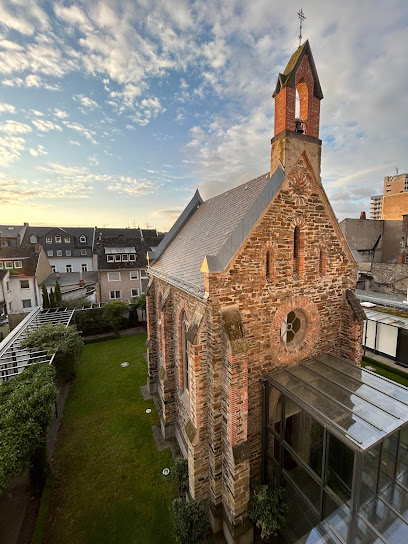
Mahnmal für die Opfer des Nationalsozialismus in Koblenz
0.8 km
A poignant memorial in Koblenz honoring the victims of National Socialism, urging reflection on the past and commitment to a future of tolerance and justice for all.
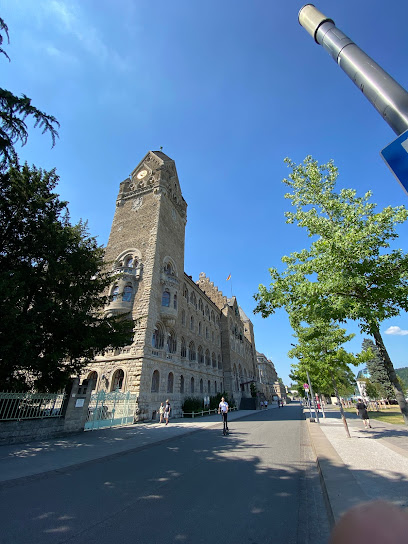
Clemensbrunnen, Koblenz - Clemens Wenzeslaus von Sachsen (1791)
0.8 km
Discover the Clemensbrunnen in Koblenz: a historic fountain honoring Clemens Wenzeslaus, reflecting the city's rich electoral past and architectural beauty.

Rheinburg
0.8 km
Experience the rich history and breathtaking views at Rheinburg Castle, a stunning medieval fortress overlooking the Rhine River in Koblenz, Germany.
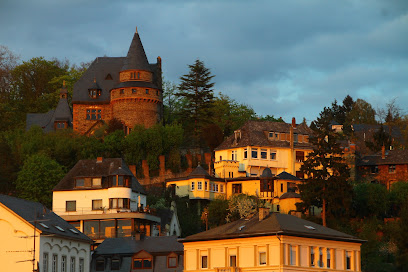
Familienbrunnen (Brunnen der Generationen), Koblenz - Rudi Scheuermann (1980)
0.9 km
Discover Koblenz's captivating history etched in stone at the Familienbrunnen, a generational fountain narrating the city's evolution from Roman times to the present day, nestled near the iconic Liebfrauenkirche.
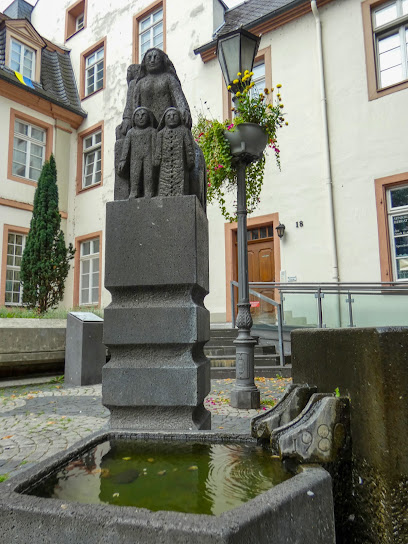
Altstadt Koblenz
0.9 km
Explore the historic heart of Koblenz, where Roman roots meet medieval charm at the confluence of the Rhine and Moselle, offering a captivating journey through time.
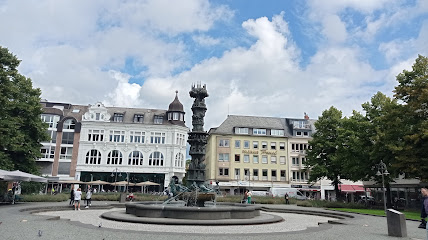
Brunnen zur Stadtentwicklung, Koblenz - Willi Heinzen (1992)
0.9 km
A modern fountain on historic Münzplatz, symbolizing Koblenz's rich history and ongoing evolution, surrounded by Altstadt charm and vibrant city life.
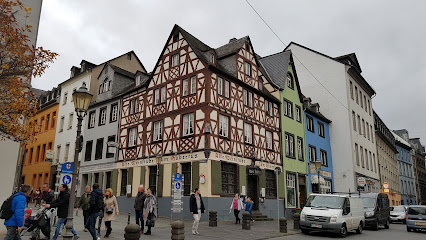
Stadtarchiv Koblenz
0.9 km
Delve into Koblenz's past at the City Archive, housed in the historic Alte Burg, offering a wealth of documents, maps, and photographs for researchers and history enthusiasts.
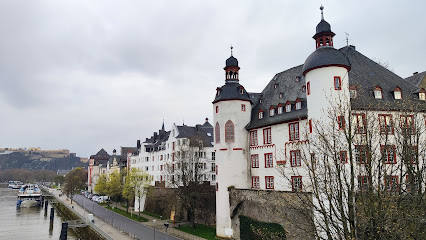
Unmissable attractions to see
Deutsches Eck
0.0 km
Explore Deutsches Eck in Koblenz, where the Rhine and Moselle rivers meet, showcasing stunning views and rich historical significance.
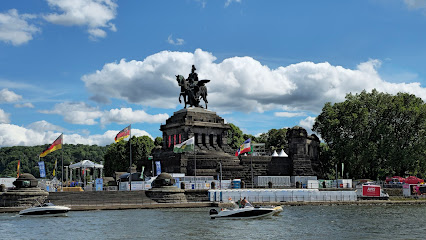
Ludwig Museum Koblenz
0.2 km
Discover the vibrant world of modern art at Ludwig Museum Koblenz, where creativity meets culture in a stunning setting.
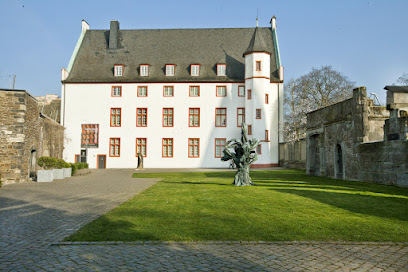
Basilica of St. Castor
0.3 km
Explore the Basilica of St. Castor in Koblenz, a historic Romanesque church offering breathtaking architecture and a serene atmosphere for pilgrims and tourists alike.
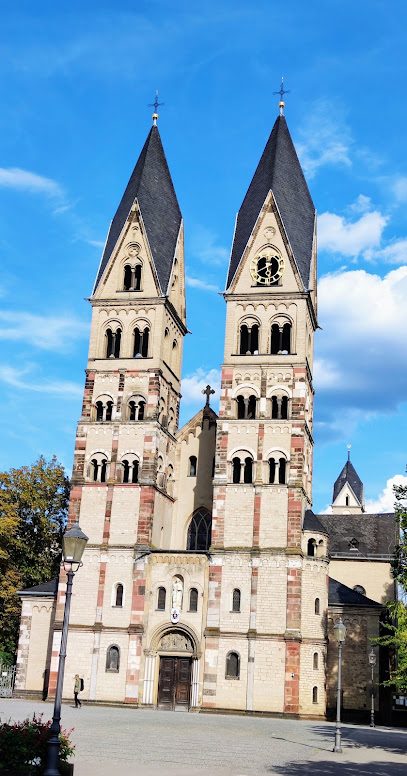
Arkadischer Quadratmeter
0.3 km
Explore the picturesque Arkadischer Quadratmeter in Koblenz, a charming tourist attraction blending history, beauty, and local culture.
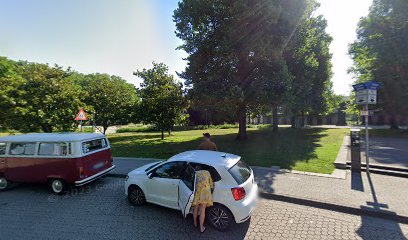
Kastorbrunnen
0.3 km
Experience the serene beauty and historical allure of Kastorbrunnen, a must-see fountain in the heart of Koblenz, Germany.
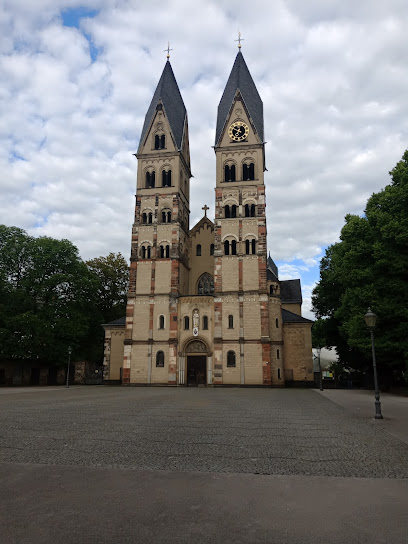
Anleger 3 - Hölzenbein
0.3 km
Discover the scenic beauty of the Rhine River at Anleger 3 - Hölzenbein, a perfect spot for relaxation and local culture in Koblenz.
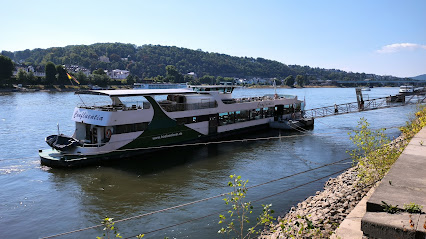
Seilbahn Koblenz - Talstation
0.3 km
Discover breathtaking views and rich history at Seilbahn Koblenz, the iconic mountain cable car offering stunning aerial perspectives of the city.
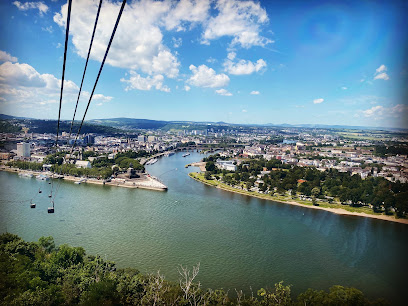
Konrad-Adenauer-Ufer
0.5 km
Discover the beauty and tranquility of Konrad-Adenauer-Ufer, a stunning riverside promenade in Koblenz, perfect for relaxation and outdoor activities.
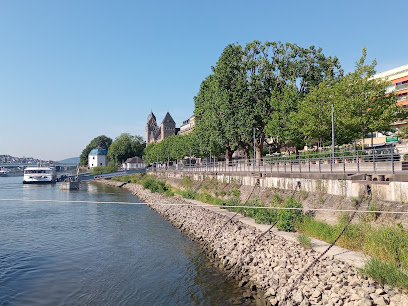
Ehrenbreitstein Fortress
0.5 km
Discover the historical marvel of Ehrenbreitstein Fortress, where breathtaking views and rich culture come together in Koblenz, Germany.
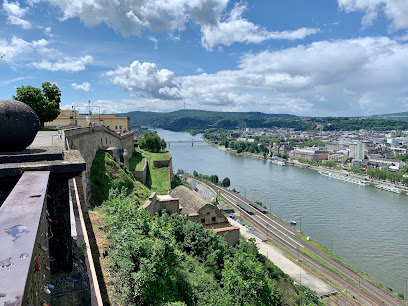
Anleger 5 KDTicket Office Koblenz
0.5 km
Explore the enchanting Rhine River from Koblenz with scenic boat tours that unveil the beauty and history of this UNESCO World Heritage site.
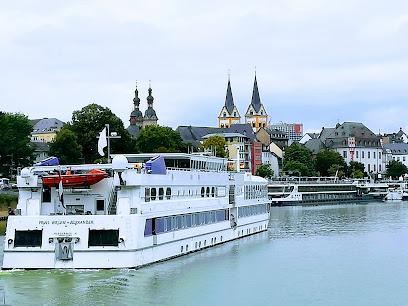
Rhein-Museum e. V. Koblenz
0.6 km
Explore the Rhine's rich maritime heritage at the Rhein-Museum in Koblenz, an engaging destination for history lovers and families.
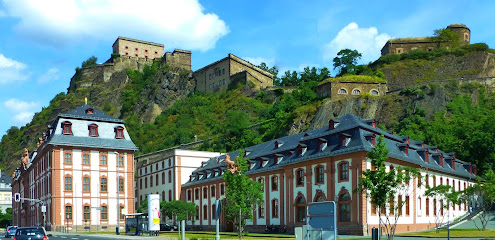
Denkmal für das Infanterie-Regiment „von Goeben“ Nr. 28
0.6 km
Explore the Monument to the Infantry Regiment von Goeben No. 28 in Koblenz, a tribute to military history surrounded by serene landscapes.

Landesmuseum Koblenz
0.6 km
Discover the rich history of the Rheinland-Palatinate region at Landesmuseum Koblenz, located in the stunning Ehrenbreitstein Fortress.
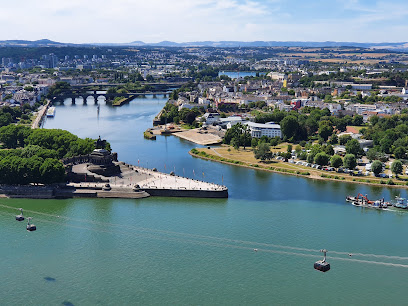
History Column
0.6 km
Discover the History Column in Koblenz - a striking memorial that encapsulates the city's rich heritage and invites reflection amidst vibrant surroundings.

Görresplatz
0.6 km
Discover the vibrant Görresplatz in Koblenz, a historic square rich in culture, stunning architecture, and local delights.
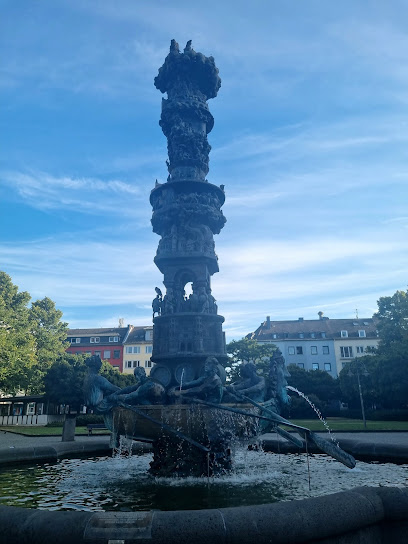
Essential places to dine
Gerhards Genussgesellschaft - Koblenz
0.2 km
Experience gourmet dining at Gerhards Genussgesellschaft in Koblenz—where tradition meets innovation in every bite.
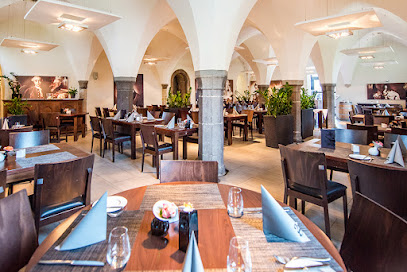
An Nam Asia Fusion & Sushi
0.4 km
Discover the rich flavors of Vietnam at An Nam Asia Fusion & Sushi in Koblenz - where tradition meets modern culinary creativity.
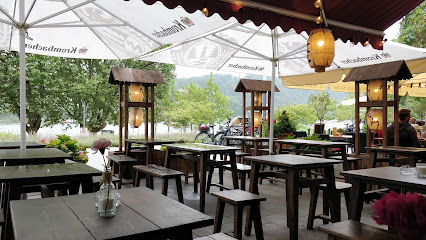
Wacht am Rhein
0.4 km
Experience authentic Italian flavors at Wacht am Rhein, where exquisite pizza meets stunning views of the Rhine River.

La Gondola - Koblenz
0.5 km
Savor authentic Italian cuisine at La Gondola in Koblenz – where every meal is a celebration of flavor and tradition.
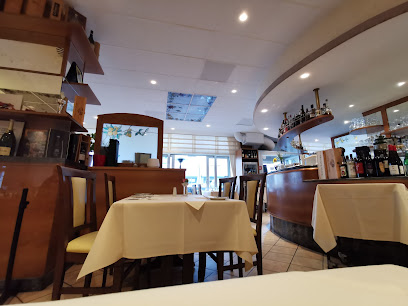
Restaurant Casino
0.6 km
Experience authentic German cuisine with stunning views at Restaurant Casino in Festung Ehrenbreitstein, Koblenz.
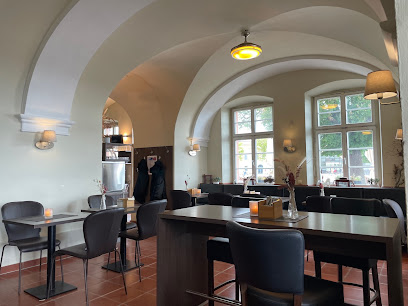
adaccio
0.6 km
Savor authentic Italian flavors at Adaccio in Koblenz—where delicious food meets vibrant ambiance.
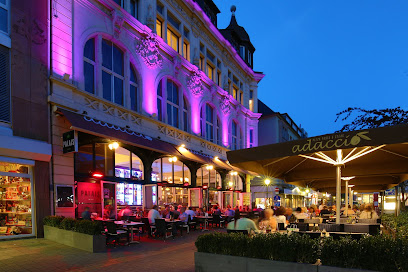
Maximilians Altes Kaufhaus
0.6 km
Discover authentic German flavors at Maximilians Altes Kaufhaus in Koblenz - a must-visit destination for food lovers exploring this historic city.
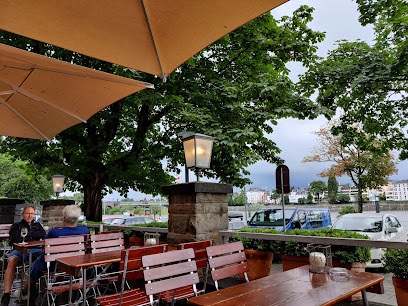
Einstein Koblenz
0.6 km
Discover the vibrant flavors of Einstein Koblenz – your go-to restaurant and cocktail bar for unforgettable dining experiences.
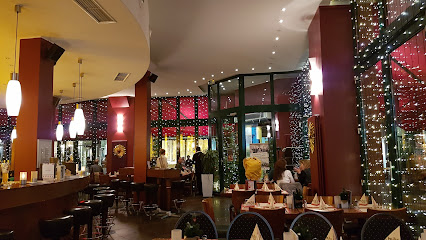
Saphir Koblenz
0.6 km
Experience exquisite dining at Saphir Koblenz - where local flavors meet international cuisine in a charming setting.

ALEX Koblenz
0.6 km
Experience the best of German cuisine and delightful pastries at ALEX Koblenz - where every meal is a celebration.
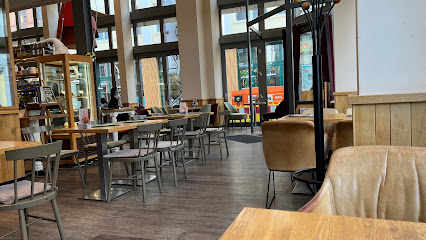
Restaurant Havana - Koblenz
0.7 km
Savor authentic Cuban cuisine and cocktails at Restaurant Havana - Koblenz, where vibrant flavors meet a lively atmosphere.
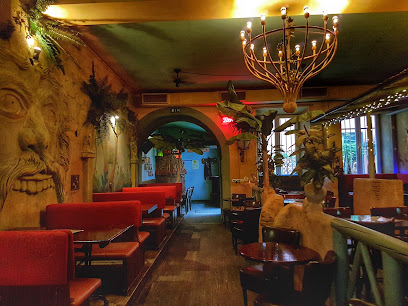
Restaurant Verbene
0.7 km
Experience fine dining at Restaurant Verbene in Koblenz—where culinary artistry meets elegance.
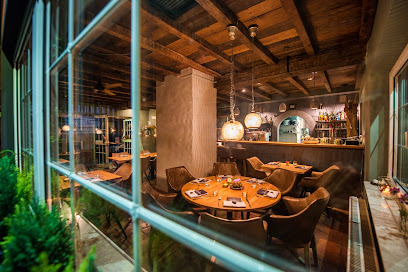
Maharani Restaurant
0.8 km
Experience authentic Indian cuisine at Maharani Restaurant in Koblenz – where rich flavors and warm hospitality await every visitor.
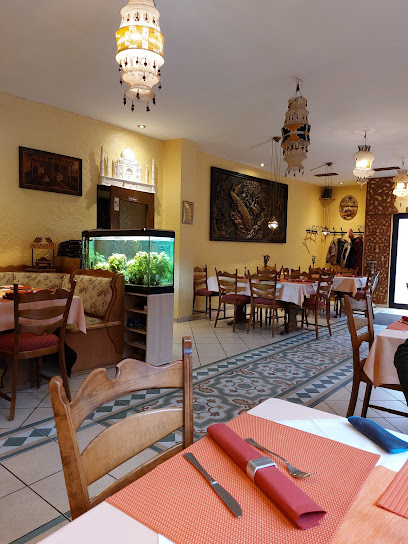
Café Bistro Pfefferminzje
0.8 km
Discover Café Bistro Pfefferminzje in Koblenz: A cozy bistro offering delightful breakfasts and exquisite coffee in a charming atmosphere.
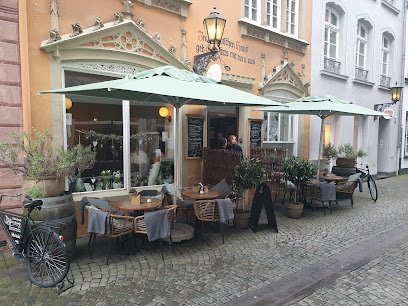
Weinhaus Hubertus
0.8 km
Discover authentic German cuisine and fine wines at Weinhaus Hubertus in Koblenz - a true gem for food lovers.
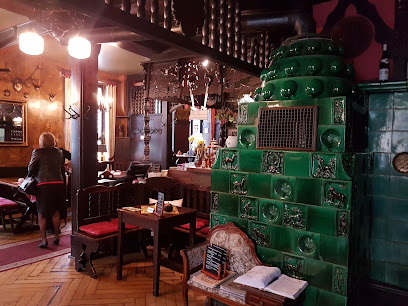
Markets, malls and hidden boutiques
Bottega d'Amore - von Herzen
0.6 km
Discover Bottega d'Amore in Koblenz, where culinary delights meet artistic inspiration in a cozy café and boutique atmosphere.

Wolford Partner Boutique Koblenz
0.7 km
Discover luxury women's fashion at Wolford Partner Boutique Koblenz, where quality meets elegance in every piece.
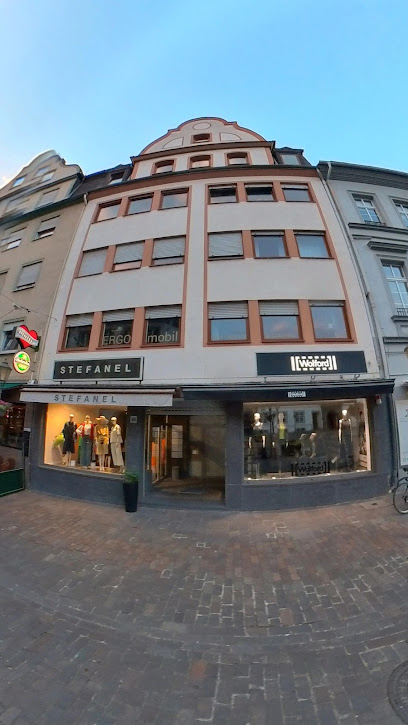
goSteam - Der Dampfer Shop - E-Zigaretten Fachgeschäft in Koblenz
0.7 km
Visit goSteam in Koblenz for a vast selection of vaporizers and e-cigarettes, expert advice, and a welcoming atmosphere for all vaping enthusiasts.
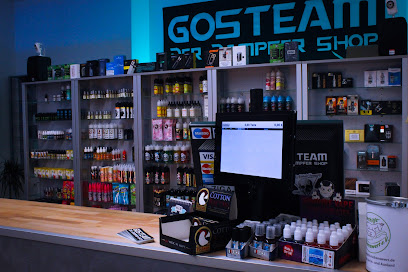
JJ7
0.7 km
Experience the local flavor at JJ7 Kiosk in Koblenz, your go-to spot for snacks and refreshments amidst stunning scenery.
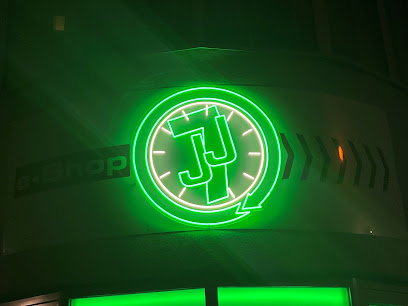
Rendantur Koblenz
0.7 km
Explore the local charm of Rendantur Koblenz, a delightful store offering unique products that celebrate the rich culture and traditions of the region.
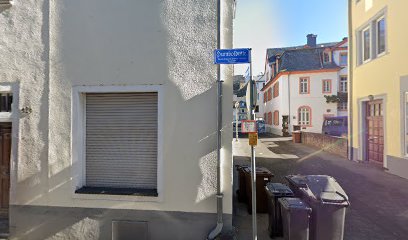
KIOSK
0.7 km
Discover KIOSK at the Seilbahn Koblenz - your essential stop for snacks, drinks, and local souvenirs with stunning river views.
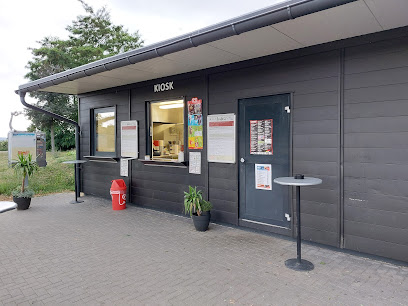
Boutiquen Isolde GmbH
0.7 km
Discover modern elegance and unique styles at Boutiquen Isolde GmbH, a charming women's clothing boutique in Koblenz, Germany.
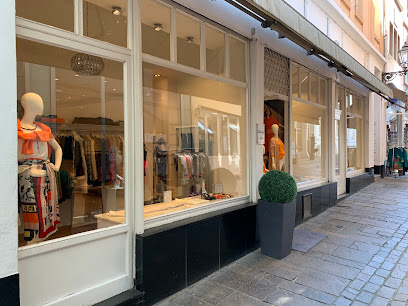
Eilika Ameln Antiquitäten, Restaurierungen
0.8 km
Explore a captivating collection of antiques at Eilika Ameln Antiquitäten, a must-visit for history enthusiasts in Koblenz.
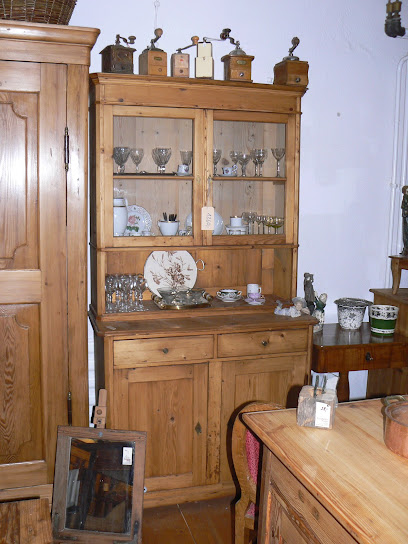
Zweite Liebe - Fashion Outlet Boutique
0.8 km
Explore Zweite Liebe in Koblenz for unique fashion finds and unbeatable deals in a charming boutique setting.
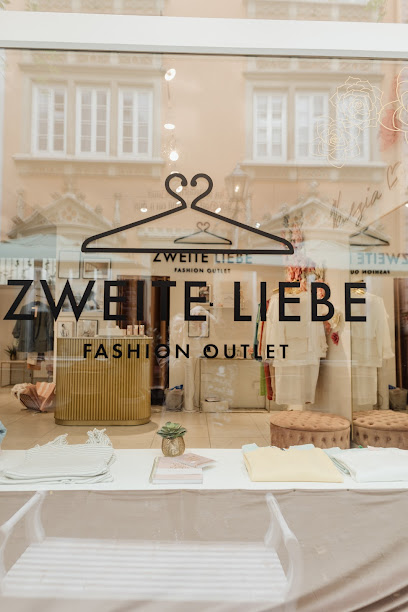
Commes GmbH
0.8 km
Explore the finest selection of chinaware at Commes GmbH in Koblenz, where craftsmanship meets elegance.
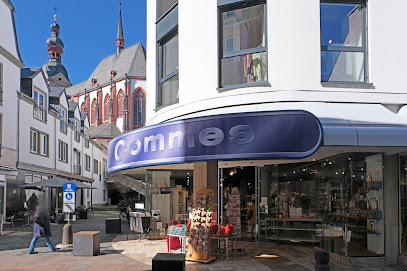
Unicorn Koblenz
0.8 km
Explore the mystical world of Unicorn Koblenz, your go-to metaphysical supply store in the heart of Koblenz, perfect for every spiritual seeker.

Bathroom
0.8 km
Discover unique souvenirs and local crafts at Koblenz's charming gift shop, capturing the spirit of the region in every piece.
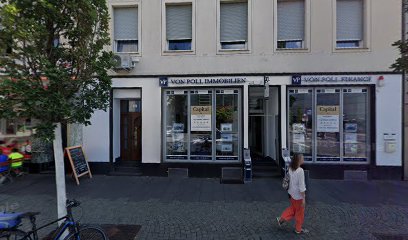
Bazaar of Wunderbar
0.8 km
Discover unique gifts and local treasures at the Bazaar of Wunderbar in Koblenz, where shopping meets cultural exploration.
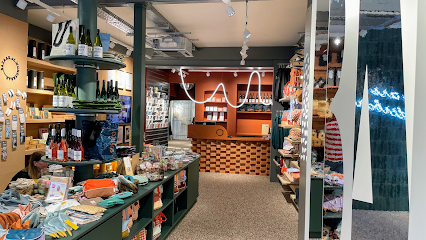
Kunstgässchen Koblenz
0.8 km
Explore Kunstgässchen Koblenz: A vibrant shopping mall offering unique boutiques, local art, and delicious dining experiences in the heart of Koblenz.
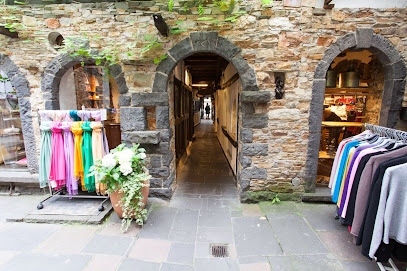
YASI WHO...?
0.9 km
Explore YASI WHO? in Koblenz for a unique shopping experience showcasing local fashion, style, and craftsmanship that you can't find anywhere else.

Essential bars & hidden hideouts
Königsbacher Biergarten am Deutschen Eck GmbH
0.2 km
Experience the best of German beer culture at Königsbacher Biergarten, where tradition meets relaxation in beautiful Koblenz.
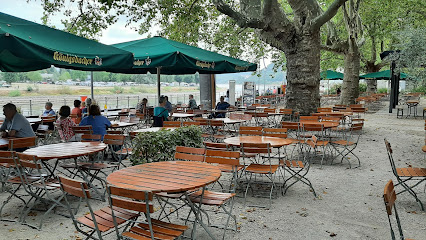
Winninger Weinstuben
0.3 km
Experience the rich flavors of local wines at Winninger Weinstuben in Koblenz, a charming wine bar perfect for every wine lover.
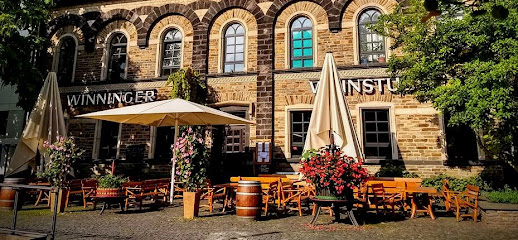
Biergarten Festung Ehrenbreitstein
0.5 km
Visit Biergarten Festung Ehrenbreitstein for a unique dining experience with stunning views and authentic German cuisine in Koblenz.

Public Lounge Bar - Koblenz
0.6 km
Discover the lively Public Lounge Bar in Koblenz, where cocktails meet community in a vibrant atmosphere perfect for unwinding after a day of exploration.

Mephisto - Koblenz
0.6 km
Discover the energetic vibe of Mephisto in Koblenz, a premier pub offering delicious food, refreshing drinks, and an unforgettable local experience.
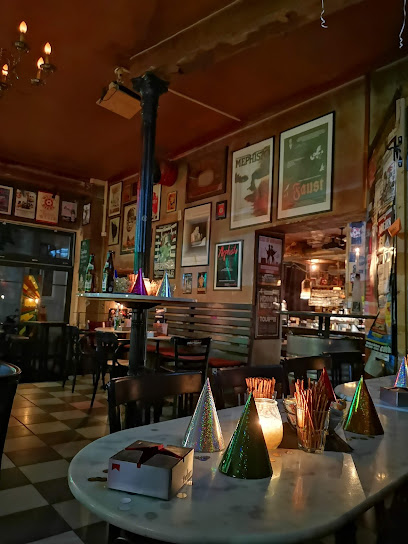
Daddy-O's - Koblenz
0.6 km
Discover Koblenz's top cocktail bar, Daddy-O's, where expertly crafted drinks meet a vibrant atmosphere for an unforgettable night.
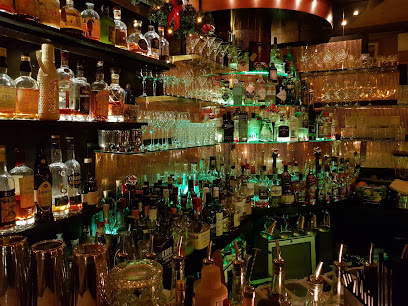
M's GASTWERKoblenz
0.7 km
Discover M's GASTWERKoblenz, a charming lounge offering exquisite cocktails and wines in a cozy atmosphere, perfect for unwinding after a day of exploration.

Wild Life Pub
0.7 km
Experience the lively Wild Life Pub in Koblenz – a welcoming bar perfect for drinks, snacks, and live entertainment in a vibrant setting.

McCoy - The Highball Ltd.
0.7 km
Discover McCoy - The Highball Ltd., Koblenz's premier cocktail bar, where innovative drinks and a vibrant atmosphere create unforgettable experiences.
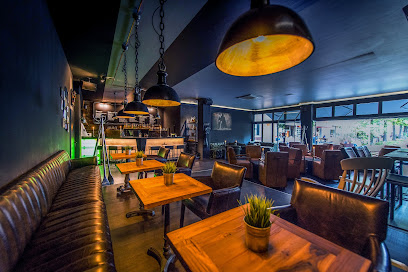
Café Bar My Way
0.7 km
Discover the perfect blend of relaxation and excitement at Café Bar My Way, Koblenz's favorite spot for coffee, cocktails, and light bites.
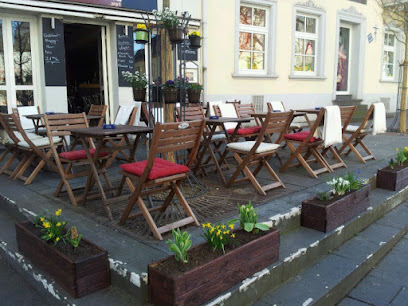
Wein- und Kaffeestübchen
0.7 km
Discover the cozy charm of Wein- und Kaffeestübchen in Koblenz, where exquisite wines and aromatic coffees await to enhance your travel experience.
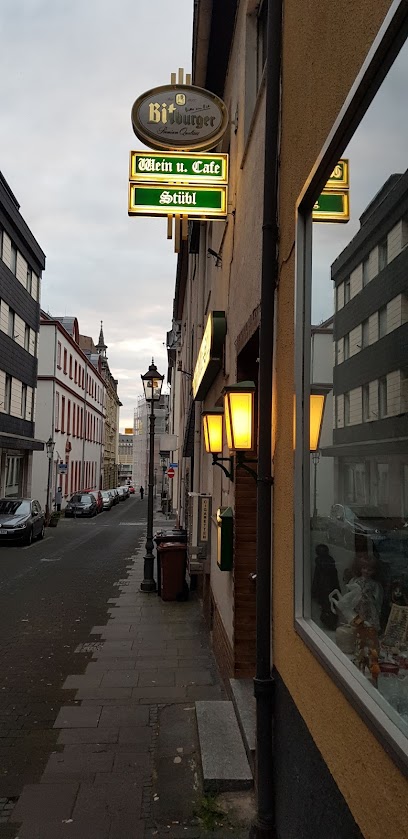
Gecko Lounge
0.8 km
Discover the vibrant nightlife of Koblenz at Gecko Lounge, where delightful drinks and a lively atmosphere await.
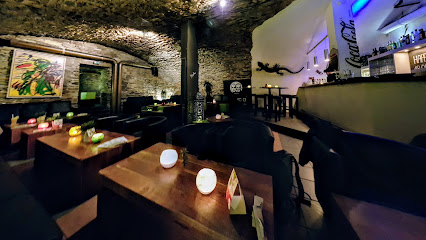
Zum Schiffchen
0.8 km
Discover the heart of Koblenz at Zum Schiffchen, where traditional German cuisine meets a lively pub atmosphere.
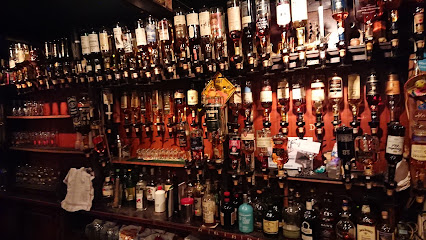
Atlas Bar - Koblenz
0.8 km
Discover the vibrant atmosphere of Atlas Bar in Koblenz, where relaxation meets socializing in a charming setting.
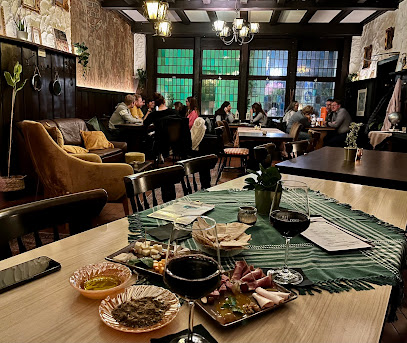
BackStage Koblenz
0.8 km
Discover the energetic nightlife of BackStage Koblenz, a lively bar and pub perfect for socializing and enjoying local drinks.
